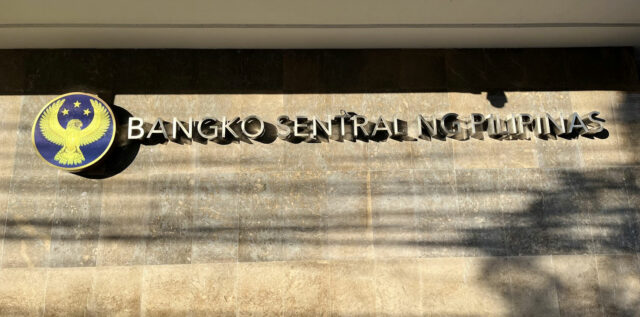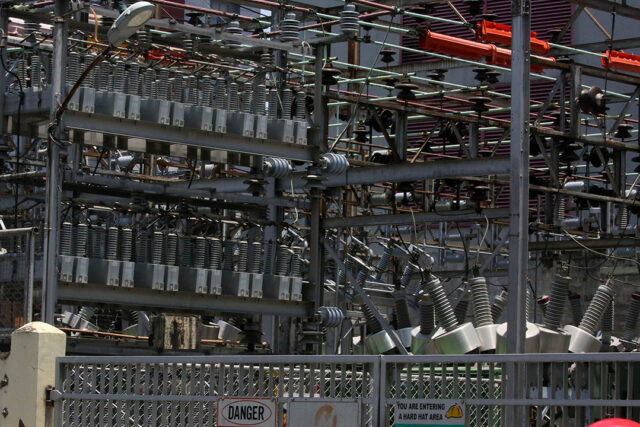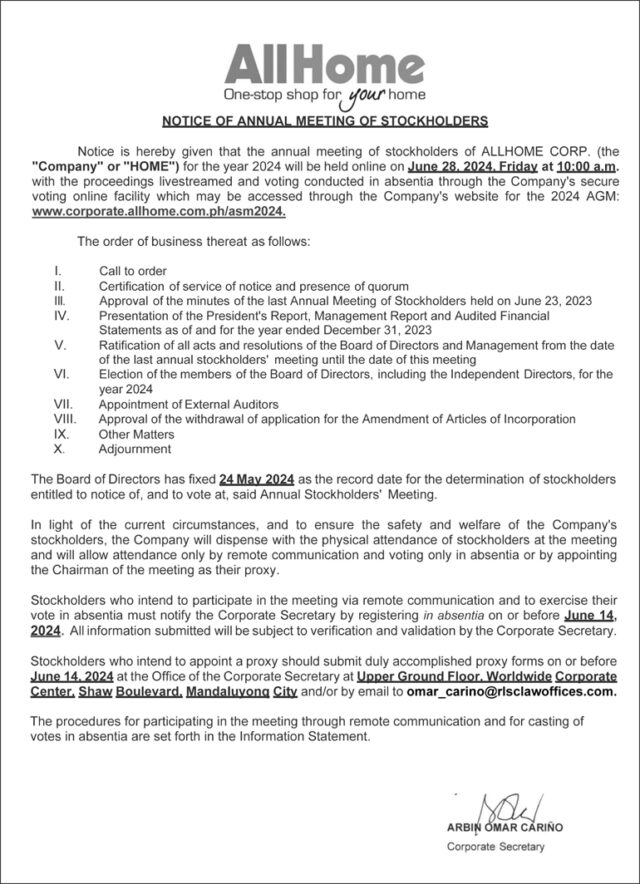By Luisa Maria Jacinta C. Jocson, Reporter
THE Bangko Sentral ng Pilipinas (BSP) will keep monetary policy settings “restrictive” as upside risks to inflation remain.
“Given upside risks, the BSP has decided to sufficiently maintain a restrictive policy stance in order to ensure that we anchor inflation expectations, so that it will not result in further second-round effects,” BSP Senior Assistant Governor Iluminada T. Sicat said at the Philippine Economic Briefing on Monday.
The central bank is anticipating faster inflation from May to July, but expects it to return to within the 2-4% target after.
“At the end of the year, the average inflation rate, based on our risk-adjusted outlook [will be] within the target, but on the upper end of the target range,” Ms. Sicat said.
The BSP’s baseline forecast for inflation this year is 3.5% while its risk-adjusted forecast is 3.8%.
“That is precisely the reason why the BSP must be very careful not to bring down interest rates too early or else we may not be able to address some of the upside risks that we are seeing in the future,” she added.
The Monetary Board stood pat for a fifth straight meeting in May, keeping its benchmark rate at a 17-year high of 6.5%.
BSP Governor Eli M. Remolona, Jr. earlier said the central bank could begin policy easing as early as August.
International Monetary Fund (IMF) Representative to the Philippines Ragnar Gudmundsson said the BSP should maintain a “sufficiently restrictive” monetary policy stance until inflation settles firmly within target.
He also said domestic data should be the primary consideration when it comes to monetary policy.
“The suggestion not to follow the Fed too closely needs to be understood in the context of efforts to tame domestic inflationary pressures,” he said. “When considering the path of monitoring policy and policy interest rate decisions… the BSP’s decisions in this case should first and foremost be data-dependent and driven by domestic price considerations.”
However, he noted that the US Federal Reserve actions should be considered as well since they also affect capital outflows.
150 BPS OF RATE CUTS
Meanwhile, Finance Secretary Ralph G. Recto said the Monetary Board could reduce the policy rate by as much as 150 basis points (bps) in the next two years.
“It’s possible that you may have a rate cut this year and possibly more rate cuts next year,” he said at the Philippine Economic Briefing. “Surely, I don’t expect interest rates to go any higher. If not, if there is time, they will start to go down, maybe 150 bps in the next two years.”
Mr. Recto, who sits on the Monetary Board, said the BSP has room to reduce rates by the third quarter.
“That’s very much possible. It all depends on the inflation outlook, and I suppose what the Fed does. Those spreads should not be too different between the US and the Philippines or else you might have flight to safety. But yes, it seems like inflation is going down,” he said.
The Finance chief also expects May inflation to stay within the target. May inflation data will be released on June 5.
Headline inflation picked up to 3.8% in April from 3.7% in March, its third straight month of acceleration. However, it was the fifth straight month that inflation settled within the 2-4% target range.
Mr. Recto said it is easier to reduce rates if inflation can settle firmly within the target.
“But we’re also mindful not only of domestic data but of what the Fed will do,” he said. “It all depends on what our inflation data [are]. So that’s the first thing that we look at… Then you look at what the Fed will do.”
PESO WEAKNESS
Meanwhile, BSP’s Ms. Sicat noted that while the central bank is monitoring the peso’s recent weakness, it prefers to allow the markets to determine the exchange rate.
“I would like to reiterate the FX (foreign exchange) policy of the BSP. We do not target any specific exchange rate level. We just let the market determine the level of exchange rate,” she said.
The peso closed at P58.11 a dollar on Monday, strengthening by eight centavos from its P58.19 finish on Friday. Last week, the peso closed at the P58-per-dollar level for the first time in over 18 months.
“We look at whether there is presence of market stress. Because if we let the market stress to be left unattended, it would affect inflation expectations. And that’s something that we are avoiding,” Ms. Sicat said.
“Given the fact that all of us are being affected by the current position of the Federal Reserve, I think this is only temporary. And eventually, once things clear up, it will be the fundamentals that will determine the level of exchange rate.”
National Economic and Development Authority (NEDA) Secretary Arsenio M. Balisacan said inflation expectations would not be affected as long as the peso does not remain weak for a prolonged period.
“It depends if it stays at that level for a long time, but if it’s just temporary, I don’t think it will have much effect on the overall future, but if it stays there a longer time, of course it will affect expectations and then prices, output and so on,” he said.
Meanwhile, Mr. Gudmundsson said that as long as there is no “sharp or prolonged” depreciation, its impact on inflation remains manageable.
“If you’re talking about the current account deficit, we also need to think about the fact that some depreciation can also support the exports of the Philippines, which in turn has a positive impact on the current account deficit,” he added.
Exchange rate flexibility is also a country’s “first line of defense against external shocks,” Mr. Gudmundsson said.












